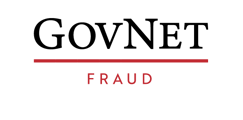The Data Challenge: Beneficial Ownership Transparency
When asked about priority investments for the next 12 months, Kevin Newe's answer (Assistant Director - Head of Illicit Finance Threats at HMRC) might surprise those who assume HMRC is awash with data: more beneficial ownership transparency data.
Whilst HMRC has 22 billion bits of data to analyse and develop profiles around, transparency with this e.g. who owns a certain company, is fundamental to greater success. This becomes critical when investigating multi-layered, multi-corporation activity - particularly in sanctions evasion cases where designated persons hide behind complex corporate structures.
Firms capable of aggregating beneficial ownership data and layering investigative and analytical tools on top represent invaluable capabilities. This isn't about HMRC lacking capability, it's about enhancing analytical power to complement existing law enforcement strengths.
Intelligence: The Golden Thread
For Matt Horne (Director of Intelligence and Investigations, Clue Software), the priority investment centres on intelligence capabilities. Whether investigating international controllers pulling strings on criminality, identifying people behind sanctioned assets, or tackling fraud and money laundering—these all fundamentally represent intelligence problems requiring the ability to join dots and establish what's really happening.
Creating that "single version of truth" or "golden thread" requires bringing disparate data sets together, but equally important is structuring material and ways of working to identify signals, patterns, and connections efficiently.
The ability to triage also emerges as critical. With everyone overwhelmed by demand and possessing far more work than resources allow, effectively separating wheat from chaff (identifying, prioritising, tasking, and acting on the right threats) becomes essential. Any capabilities, whether human or technology-enabled, that support intelligence-led, technology-supported approaches with people at their core would significantly enhance effectiveness.
Case Studies to Watch in 2025
Martin Lewis AI Deepfake Scams
Fran Stringer (Director, PWC) highlights the Martin Lewis AI-generated deepfake scams as the most relatable and instructive case study for 2025. Whilst not the most technical example, its significance lies in demonstrating how prolific AI-powered fraud has become.
Years after first appearing in the press, these scams continue. Despite law enforcement awareness, platform knowledge, and public visibility, fraudsters continue benefiting from new variants.
This case brings fraud out of the expert sphere into everyday conversation, making it accessible and relatable. It poses uncomfortable questions: how do we address known risks when current responses leave fraudsters winning? The answer lies partly in raising awareness to protect consumers and prompting organisations to consider their own deepfake defences.
Operation Destabilise: Convergence in Action
Matt Horne points to Operation Destabilise, led by the National Crime Agency with multiple partners, as exemplifying the convergence theme running throughout modern economic crime.
This investigation targeted a Russian money laundering network, but the scope demonstrates threat complexity: laundering drug cartel money and street-level UK cash bundled into virtual currencies; processing ransomware gang proceeds from corporate and government extortion; and supporting sanctioned Russian individuals, straying into counter-state threat territory.
One money laundering outfit servicing street drugs crime, ransomware, and national security threats across a transnational operation perfectly illustrates the convergence, complexity, and cross-border nature characterising modern economic crime.
High Street Intensification Exercise
Next month's intensification exercise represents a month-long operation examining cash businesses across multiple high streets. This multi-agency effort, involving all regional organised crime units and all 43 police forces - will generate valuable learnings for regulated sector organisations and law enforcement alike.
The operation will inform risk management strategies and pose questions for local authorities: how can we ensure high streets are no longer compromised by businesses facilitating money laundering?
Corporate Criminal Offences: Setting Precedents
HMRC recently secured its first charge for the corporate criminal offence of failure to prevent the facilitation of tax evasion, though the trial is scheduled for 2027 due to criminal justice system delays. Whether the failure to prevent fraud offence takes seven years to reach similar milestones remains to be seen.
The Entain PLC deferred prosecution agreement - HMRC's first - demonstrates ambition beyond corporate settlements. Six or seven individuals face money laundering charges linked to that firm, with trials likely in coming years, showing substantive investigation underpinning corporate outcomes.
Small Business Evasion
HMRC's investment in new resources tackling small business evasion will generate numerous charges and cases over coming months. This newly established function is hitting the ground running, with cases expected to reach courts shortly.
Strategic Implications
These priorities and case studies reveal consistent themes for counter fraud professionals:
- Data and intelligence remain foundational, particularly beneficial ownership transparency
- Triage capabilities separate effective teams from overwhelmed ones
- AI-enabled fraud is endemic, not fringe, demanding everyday awareness
- Convergence means traditional threat categorisations no longer suffice
- Corporate accountability is evolving with new offences establishing precedents
- Multi-agency operations demonstrate the integrated response modern threats demand
The case studies demonstrate both the scale of challenge and the scope of response emerging across sectors. Success in 2025 demands learning from both.
Jessica Kimbell, GovNet

